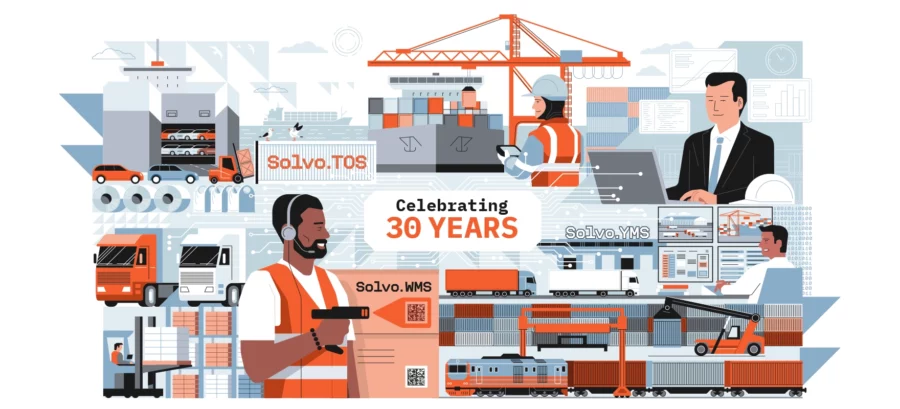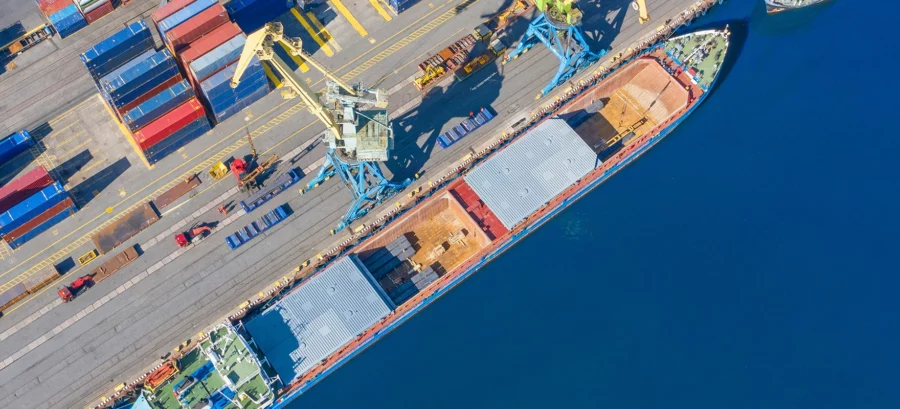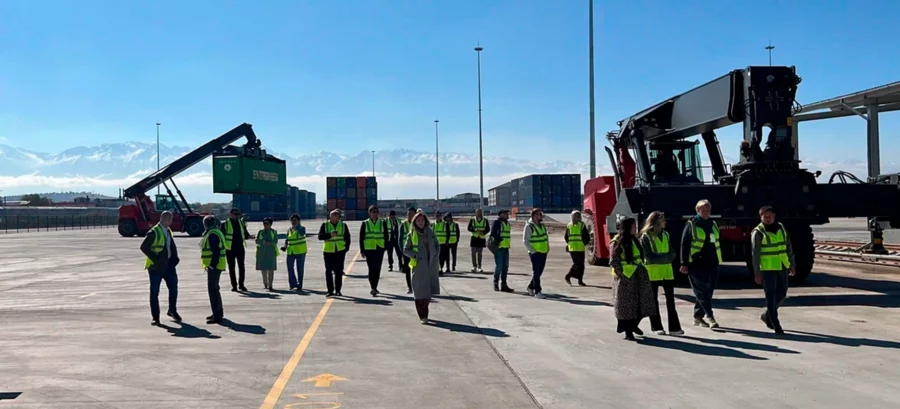How Can The Solvo.TOS Planning Module Increase Vessel Handling Efficiency At A Cargo Terminal
The main advantage of the Solvo.TOS system is that it automates all operations of a cargo terminal, such as handling various cargo and transports, document flow, managing internal and external operations, and interacting with other logistic players. Today, we are going to share how efficiency of port terminals can be improved with our vessel planning module.
- Early Information Handling. The module gathers input documents on the cargo from a vessel en route, ensuring seamless and time saving cargo handling operations upon the vessel’s berthing.
- Comprehensive Volume Visualizing. The module develops a volumetric plan that visually represents each container and the layout for upcoming loading or unloading.
- Cargo Handling Planning. Solvo.TOS can automatically generate a vessel handling schedule taking into account the ships arrivals, estimated handling deadlines, and the container characteristics and specifications. That helps to avoid disorganization with transit containers.
- Automatic Planning. An additional benefit of automated planning is the ability to set rules for specific containers including imports or transit cargoes, or specificity of allocating container fixtures on the deck. This helps to improve the quality of planning, to optimize the equipment selection and tasks assignment, as well as to manage cargo distribution within the terminal storage.
- Real-time Monitoring. The operator can control container movements onto vessels in real-time, ensuring operational efficiency and immediate response capabilities.
- Management of Vessel State and Timesheets. Semi-automatic mode takes into account the berthing, departures, and other events. This enhances the operational transparency.
- EDI and Data Integration: The Solvo.TOS system seamlessly integrates EDI messages and data from XML/XLS formats, ensuring smooth and non-paper data flow.
All these advantages ensure double-digit efficiency in crane utilization and loading speeds, while the likelihood of errors due to human factors decreases. Make it all possible with just one vessel planning tool of the many other useful Solvo.TOS modules and functions.






